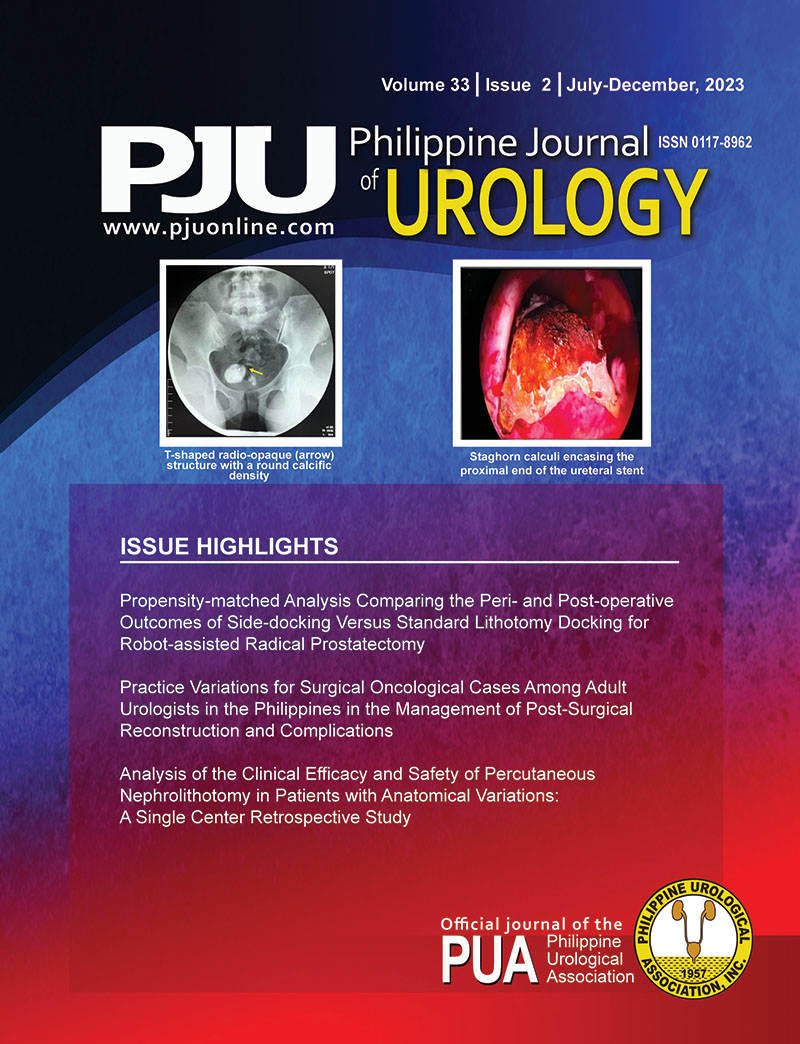Abstract
Introduction: Limited access to the perineum and limited operating room space are just some of the limitations of the standard lithotomy docking for robot-assisted radical prostatectomy (RARP-LD). The side-docking technique (RARP-SD) may address these problems.
Methods: Thirty cases of robot-assisted radical prostatectomy were matched to 120 cases of RARP-LD cases by propensity scoring using age, body mass index (BMI), clinical T stage, biopsy Gleason score, and ultrasound prostate volume. Operative and docking time, complications were used to compare peri-operative and safety outcomes.
Results: Evaluation of 30 RARP-LD and 30 RARP-SD cases was done after propensity matching. Patient age, BMI, clinical T stage, biopsy Gleason score, and prostate volume were similar between the two groups (p>0.050). The mean docking time of RARP-SD is shorter than that of RARP-LD cases (7.56 vs. 4.12, p <0.001), but this did not translate to a shorter operative time. There were less peri-operative complications in the RARP-SD cases.
Conclusions: RARP-SD has a docking time and produces less complication than RARP-LD.

This work is licensed under a Creative Commons Attribution-NonCommercial-NoDerivatives 4.0 International License.
Copyright (c) 2023 Patrick H. Tuliao, MD, MHM, FPUA, Enrique Ina S. Lorenzo, MD, FPUA, Julius C. Cajucom, MD, FPUA

